A Brief History: All The Queen’s Houses
As people, countries across the world and the international media mourn Her Majesty Queen Elizabeth II and her 70-year reign, it gives us the chance to look back at her life and work. From training as an auto mechanic in World War II to ascending the thrown in 1953 at just 25 years old – her life was varied and always played out on a global stage.
But among many things, there were a few constants in her life, which included her properties. Whether it was a sprawling estate in Scotland or the regalia of gold-leaf palaces, there became a familiarity to be enjoyed in her homes. We take a look back at the history of the royal properties and the time Queen Elizabeth II spent there.
1. Buckingham Palace – The London Headquarters
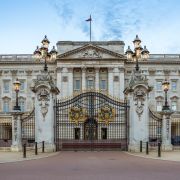 The crown-owned palace belongs to the ruling monarch, and so now stands as King Charles III’s property. It was built in 1703, but didn’t become monarch property until 1837 on the accession of Queen Victoria. It has a total of 775 rooms, including 19 state rooms, 52 royal and guest bedrooms, 188 staff bedrooms, 92 offices and 78 bathrooms. The building acts as a focal point for national celebrations, state occasions and royal hospitality.
The crown-owned palace belongs to the ruling monarch, and so now stands as King Charles III’s property. It was built in 1703, but didn’t become monarch property until 1837 on the accession of Queen Victoria. It has a total of 775 rooms, including 19 state rooms, 52 royal and guest bedrooms, 188 staff bedrooms, 92 offices and 78 bathrooms. The building acts as a focal point for national celebrations, state occasions and royal hospitality.
Visitors can purchase tickets to see the house and gardens, and even go on an evening tour of the state rooms. However, throughout its history it has been reported that at least 12 people have managed to gain unauthorised entry into the palace or its grounds since 1914. Most famously, Michael Fagan entered the palace in the 80s and entered the Queen’s bedroom, where she calmly called security and had him escorted off the premises.
2. Windsor Castle – The Weekend Retreat
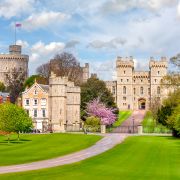 The Queen used to frequent this location on weekends, another crown-owned property, it was her main residence from 2011 to 2022. Originally built in the 11th century after the Norman invasion of England by William the Conqueror, the castle spans 13 acres and boasts 1,000 rooms, making it the largest occupied castle in the world.
The Queen used to frequent this location on weekends, another crown-owned property, it was her main residence from 2011 to 2022. Originally built in the 11th century after the Norman invasion of England by William the Conqueror, the castle spans 13 acres and boasts 1,000 rooms, making it the largest occupied castle in the world.
A fire spread through the castle in 1992, which lasted for 15 hours and required 200 fire fighters to put it out with more than 1.5 million gallons of water. In the end, it cost around £37 million to restore (which is the equivalent of around £65 million, today).
Among many of the attractions to see there, you can see the Queen Mary’s Dolls’ House, which was built between 1921 and 1924 for Queen Mary, wife of George V, by the leading British architect Sir Edwin Lutyens.
3. Sandringham House – A Family Holiday Home
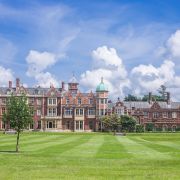 Based in Norfolk, the Sandringham Estate is often used for entertaining during the holidays, most notably at Christmas when the Royal Family take their annual walk to the St. Mary Magdalene church. This is just one of two residences that the Queen actually owns, the other being Balmoral Castle. The rest are owned by the Crown Estate. In line with a rule introduced in 1993, the estate gets passed to King Charles II without any inheritance tax payments, to guard against the royal family’s assets being wiped out if two monarchs die in a short period of time.
Based in Norfolk, the Sandringham Estate is often used for entertaining during the holidays, most notably at Christmas when the Royal Family take their annual walk to the St. Mary Magdalene church. This is just one of two residences that the Queen actually owns, the other being Balmoral Castle. The rest are owned by the Crown Estate. In line with a rule introduced in 1993, the estate gets passed to King Charles II without any inheritance tax payments, to guard against the royal family’s assets being wiped out if two monarchs die in a short period of time.
Sandringham operates as a sporting estate, which includes a wild pheasant and partridge shoot. It’s where the Queen bred winning race horses and gun dogs. It also includes Wood Farm, a large farmhouse, where the Duke of Edinburgh used to spend much of his time during retirement.
4. Holyrood Palace – The Official Scottish Residence
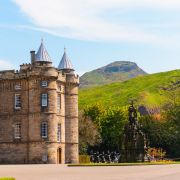 Originally founded as a monastery in 1128, Holyrood Palace has a rich and colourful history. Most notably, it was the home of Mary, Queen of Scots. She was married here, and witnessed the brutal killing of her secretary (who she was rumoured to be having an affair with) in her private apartments.
Originally founded as a monastery in 1128, Holyrood Palace has a rich and colourful history. Most notably, it was the home of Mary, Queen of Scots. She was married here, and witnessed the brutal killing of her secretary (who she was rumoured to be having an affair with) in her private apartments.
During the Queen’s reign, she used to visit the palace whenever she travelled up north, to meet and greet officials. Typically, this would happen during the first week of the summer, an event known as Holyrood Week.
5. Balmoral Castle – The Private Scottish Retreat
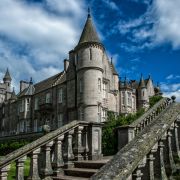 Famously, this is said to have been the Queen’s favourite residence and is officially owned by her, rather than the Crown Estate. Known for its privacy and relaxed outdoorsy setting, it came known to be a place where the Queen could relax and unwind during the summer weeks with the company of her family, her dogs and her horses – and, reportedly, even do the washing up after dinner. And it is, in fact, where the Queen passed away on Thursday 8th September 2022.
Famously, this is said to have been the Queen’s favourite residence and is officially owned by her, rather than the Crown Estate. Known for its privacy and relaxed outdoorsy setting, it came known to be a place where the Queen could relax and unwind during the summer weeks with the company of her family, her dogs and her horses – and, reportedly, even do the washing up after dinner. And it is, in fact, where the Queen passed away on Thursday 8th September 2022.
The castle is part of a working estate, which includes grouse moors, forestry, farmland and 150 buildings and is home to endangered red squirrels, which you can follow on a live camera online!
6. Hillsborough Castle ¬– The Official Residence in Northern Ireland
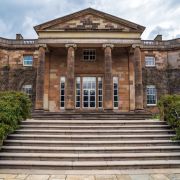 During tours and visits to Northern Ireland, the Queen used to stay at Hillsborough Castle, much like King Charles III will now. It is also the official residence of Northern Ireland’s Secretary of State.
During tours and visits to Northern Ireland, the Queen used to stay at Hillsborough Castle, much like King Charles III will now. It is also the official residence of Northern Ireland’s Secretary of State.
Built in the 1770s, the home is surrounded by 100 acres of lush green gardens.

